Nestled in the heart of the My Son valley, in the Vietnamese
province of Quang Nam, stands a group of red-brick temples, the remains of a refined and powerful civilization: the Champa kingdom. Listed as a
UNESCO World Heritage Site in 1999, this exceptional archaeological site invites you on a fascinating journey into the history and culture of a people who left a lasting mark on Southeast Asia.
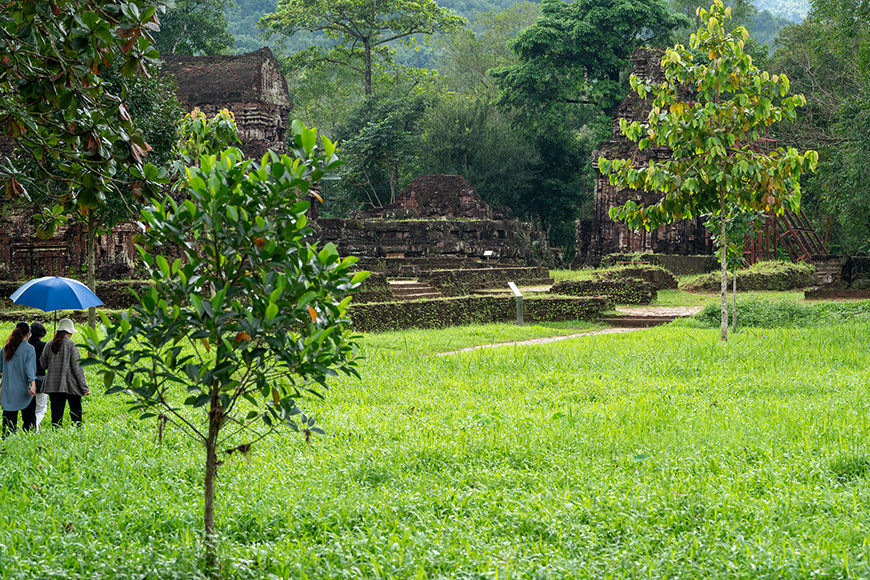
Champa, a thousand-year-old heritage - Source : Mr Linh's Adventures
Champa, a thousand-year-old heritage
Founded in 192 A.D., the kingdom of Champa prospered thanks to its maritime trade, its links with the great Asian powers and its adoption of Hinduism and Buddhism. Powerful rulers built majestic cities, including the capital Indrapura, and grandiose temples dedicated to their deities.
This flourishing Southeast Asian kingdom flourished for over a thousand years, from the 4th to the 13th century, on the central coasts of present-day Vietnam, rivalling the Khmer and Annamite empires. This refined civilization, imbued with Indian and Chinese influences, left a rich and complex cultural heritage, still visible today through archaeological sites and living traditions.
The architectural heritage of the Chams
The remains of this lost civilization, scattered across the Vietnamese landscape, bear witness to its past grandeur. The sanctuaries of My Son, a UNESCO World Heritage site, are a remarkable group of red-brick towers sculpted with Hindu deities and geometric motifs.
Did you know? Located in Nha Trang, Po Nagar is another Champa temple complex dedicated to the goddess Po Nagar. It is one of the best-preserved Champa remains in Vietnam.
A people with enduring traditions
Despite invasions and gradual assimilation by Vietnam, Cham culture endures. It is reflected in graceful Apsara dances, colorful weavings and spicy culinary traditions. The Cham community, now a minority, retains its language and religion, perpetuating a precious heritage.
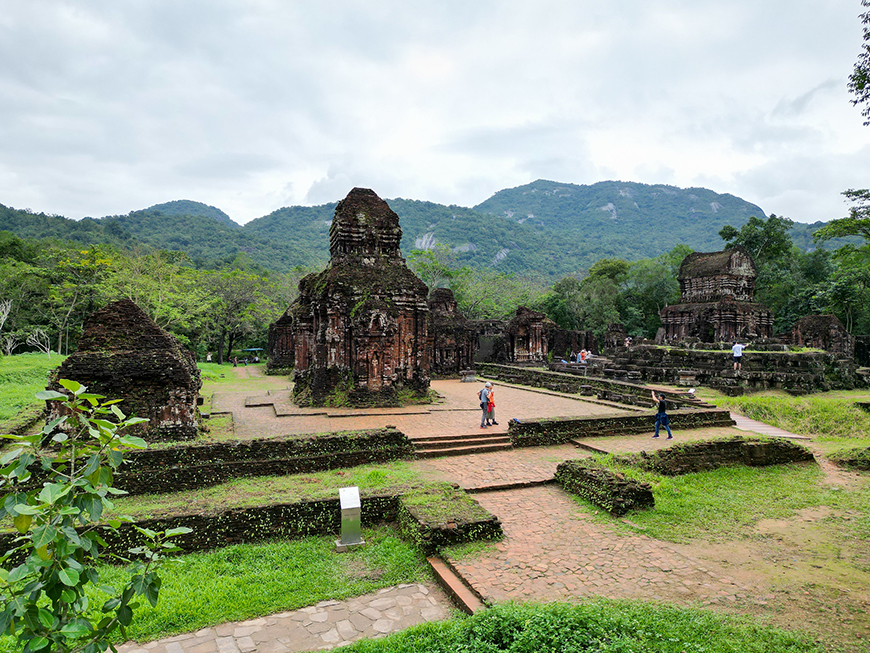
The sanctuaries of My Son - Source : Mr Linh's Adventures
My Son, a major Cham religious city
A thousand-year-old sanctuary and nerve center of the Champa kingdom, My Son has stood since the 4th century as a striking testimony to the grandeur of this vanished civilization. More than 70 monumental edifices, some 20 of which still stand today, raise their majestic silhouettes to the sky, veritable architectural gems dedicated to the veneration of Hindu divinities.
Stepped brick pyramids, ceremonial basins, sacred altars and mysterious sanctuaries stand proudly, vibrant testaments to the architectural refinement and profound beliefs of the Cham people. Each king, on his accession, erected a new temple, enlarging the sanctuary over the centuries. This evolution is reflected in the diversity of styles and sizes of the temples, a veritable stone chronicle of the ingenuity and creativity of the Cham builders.
My Son, much more than just a collection of temples, is the soul of the Champa kingdom, its beating heart for almost a thousand years. In its majestic ruins, the echoes of prayers and ceremonies still echo, while the stones whisper the secrets of a refined and powerful civilization.
My Son, a unique heritage to explore
Once the shining religious and political capital of the Champa kingdom for almost a thousand years, My Son fell victim to Vietnamese expansion in the 15th century. Gradually deserted and forgotten, the city sank into lethargic silence under the embrace of luxuriant vegetation.
In 1885, a new chapter began for My Son. Its rediscovery by explorers marked the beginning of a long process of documentation, excavation and inventory. Under the leadership of Henri Parmentier, the ancient remains were brought back to life. 72 monuments divided into 13 groups revealed to the world the past splendor of the Champa kingdom.
But fate proved cruel. In 1969, the Vietnam War hit My Son hard. American bombing raids ravaged the centuries-old temples, wiping out much of this heritage treasure. Only around twenty monuments, grouped into 8 clusters, survived the devastation.
Did you know? The then curator of the Guimet Museum wrote a letter of protest to US President Richard Nixon, asking him to spare these sites. In fact, only around twenty monuments remain, now classified into eight different groups.
Since the 1970s, patient reconstruction and restoration work has been underway under the aegis of UNESCO. 25 major monuments have risen from the ashes, revealing to visitors the architectural and cultural wealth of the Cham people.
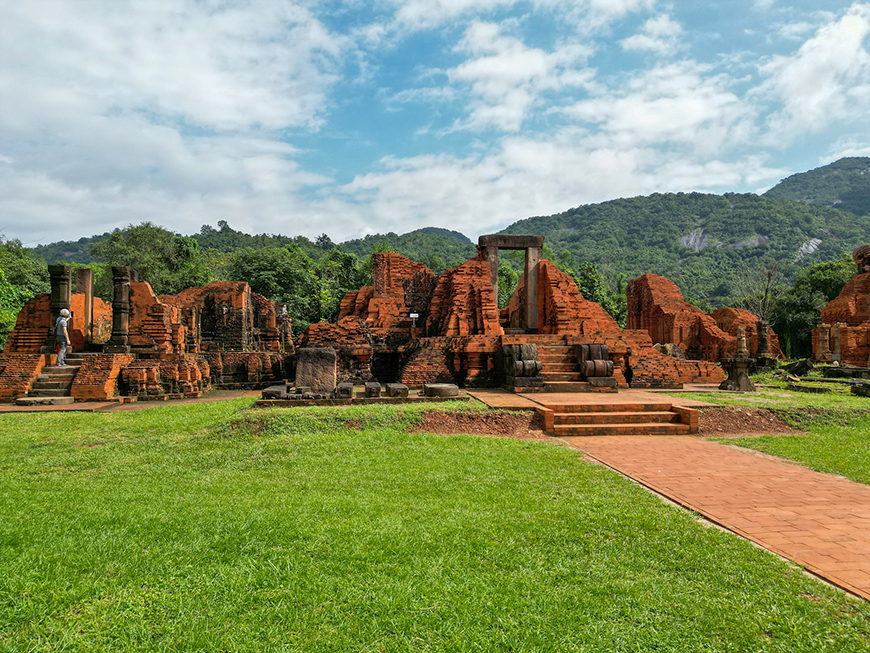
My Son, the valley of the Cham Kings - Source : Mr Linh's Adventures
Take a stroll through this "valley of the Cham kings" and let the mystical atmosphere enchant you. Admire the finely carved sculptures, the bas-reliefs depicting divinities and dancers, and the enigmatic Sanskrit inscriptions engraved on the ancient "royal road". Each stone whispers a story, each temple recounts the grandeur of a vanished civilization. The temples, with their harmonious forms and meticulously sculpted details, symbolize the ascent to the divine world. Majestic towers, adorned with geometric motifs and divine sculptures, once housed the sacred lingas, phallic representations of Shiva. These majestic edifices were surrounded by a series of ancillary buildings: libraries, dance halls and sanctuaries dedicated to other deities. Remains of underground galleries reveal a complex network linking the various buildings.
My Son, more than just an archaeological site, is a resurrection. It's a journey through time, a plunge into the heart of the beliefs and rituals of a refined civilization. A poignant testimony to the resilience of the human spirit in the face of the adversities of time and man.
The site's highlights include
✓ Group E1: Admire the majestic temple complex, dominated by the main sanctuary dedicated to the god-king Bhadresvara, founder of the Indravarman dynasty. Immerse yourself in history and feel the power of this legendary king.
✓ Group B1: Marvel at the Kalan temple, a veritable giant among the rest, with its towers rising over 20 meters high. An architectural masterpiece that will transport you to another world.
✓ My Son Museum: a precious treasure trove housing a collection of fascinating objects - statues, lingas and inscriptions - that trace the history and culture of the Chams. A captivating journey to the heart of their daily life and beliefs.
Hidden clues for seasoned explorers
♦ In front of each group of temples, a plaque awaits you, revealing the secrets of the structures and guiding you through the ages.
♦ Take a close look at the floor: large indentations reveal the bomb craters, painful remnants of the Vietnam War. A poignant reminder of the fragility of history and beauty.
My Son, practical information
Located around 40 kilometers from Hoi An, the My Son sanctuary is easily accessible by car, motorcycle or cab.
How to get there
From Hoi An: Day trips are organized from Hoi An, about 45 km from the site.
From Da Nang: Shuttles and cabs (approx. 1-hour journey) are available from Da Nang, a bustling city around 65 km from My Son.
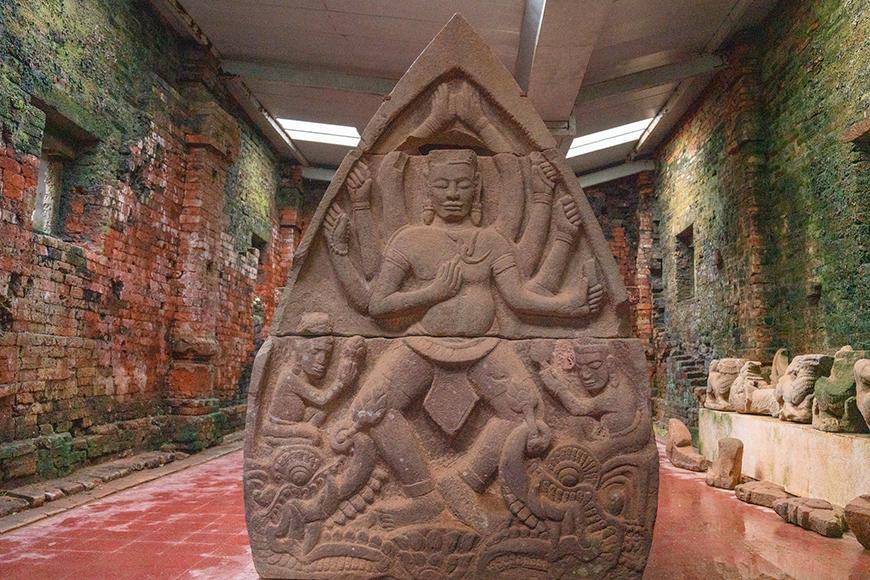
The Musuem of My Son - Source : Mr Linh's Adventures
Best time to visit
To make the most of your exploration without worrying about bad weather, opt for the dry season, from February to August, when temperatures are mild and rain is scarce.
- Opening hours: 6.30 a.m. to 5.30 p.m., 7 days a week
- Recommended length of visit: 2 to 3 hours to discover the wonders of the site at your own pace.
- Entrance fee: 150,000 dongs (approx. €6) - An electric shuttle is offered to facilitate access to the site.
- English-speaking guide: For total immersion in the history and secrets of My Son, opt for an English-speaking guide (10,000 VND).
Mr Linh's advice
✓ Choose mornings or late afternoons: avoid the hottest hours of the day and enjoy the soft, pleasant light. Ideally, finish your visit before the traditional show begins at 9:30 a.m. to enjoy a moment of calm and serenity on the site. That way, you'll have the ruins practically to yourself, before the crowds arrive.
✓ Start with the smaller sites: Take the path on the left to discover My Son's treasures in ideal order. Save the best for last and end your exploration with a visit to the museum, located just past the ticket office, before the crowds arrive.
✓ Comfort and safety first: Choose comfortable clothes and shoes suitable for walking on sometimes uneven terrain. Protect yourself from the sun with a hat and sunscreen.
✓ Immortalize your memories: Don't forget your camera to capture My Son's architectural wonders and splendid landscapes.
Respecting the site
To preserve the magic of this place and the experience of all, adopt these simple gestures:
♦ Be a responsible custodian: Treat the sculptures and monuments with respect. They are the remains of a vanished civilization and deserve to be preserved for future generations.
♦ Whisper the secrets of the past: Maintain a calm and peaceful atmosphere. Let yourself be transported by the silence and imagine the murmurs of prayers and ceremonies that once animated this sacred place.
♦ Dress smartly: Although My Son is not an active place of worship, it's important to respect its spiritual dimension. Dress decently, covering the knees and shoulders. Save bathing suits for the beach.
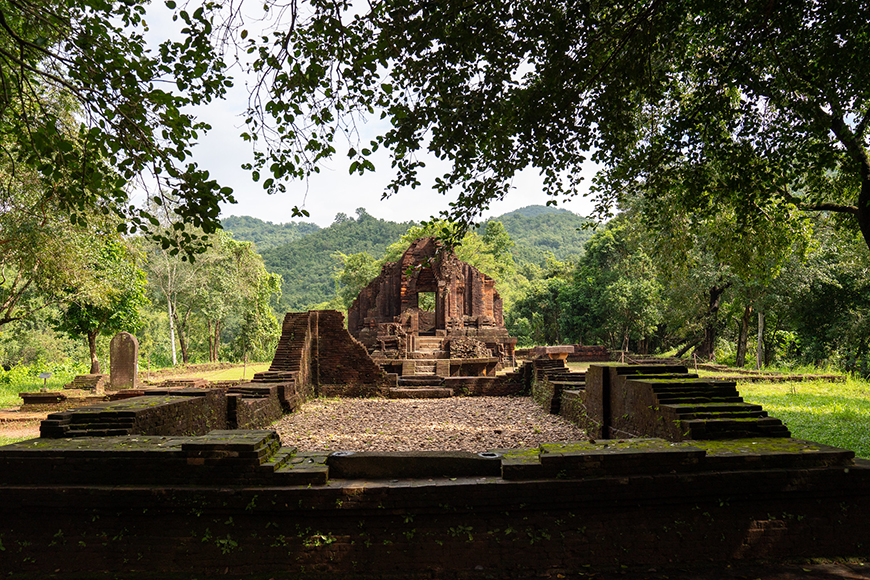
My Son, UNESCO Heritage Site - Source : Mr Linh's Adventures
In conclusion
My Son is a unique experience that will leave an indelible mark on your memory. A journey through time, an encounter with a fascinating civilization and a moment of unforgettable serenity (provided you come early in the morning!).
Don't wait any longer, come and discover My Son and let yourself be transported by the magic of this extraordinary place!